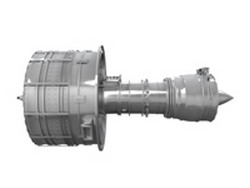Aircraft casting overcomes reactivity
Ti alloys are widely used in the aerospace industry given their excellent strength, low density, corrosion resistance and durability. Large Ti components are typically manufactured using thermochemical processing. Although it is expensive, it is currently preferable to more cost-effective casting due to superior quality and reliability of the product. A Chinese and European consortium initiated the EU-funded 'Casting of large Ti structures' (COLTS)(opens in new window) project to improve the quality of cast products and reduce the cost even further. Casting is a process whereby molten metal is poured into a hollow mould and the material is cooled into a solidified shape. The Chinese team brought extensive experience in casting and in electron beam welding of Ti alloys. This was complemented by European group expertise in computer modelling of casting and welding and in assessment of materials' microstructures and properties. Selected demonstrators were a large cylinder, a cubic space frame, a doorframe and cross-connectors containing many thin-walled components. Molten Ti alloys are highly reactive and must be melted under special conditions that limit their temperature. This in turn makes filling of mould cavities difficult, particularly for thin and/or large castings. Researchers applied metal-based coating to strong waxes developed by the consortium to make the final moulds for casting the parts with limited wax distortion. The coatings significantly inhibited reactivity with the molten alloy. Welded and cast components showed promising ability to meet requirements of dimensions, surface finishes and mechanical properties. Subsequent modelling suggests that processes can be optimised to do so completely. Project components are now on display at the European Space Agency's museum in the Netherlands, attesting to the significance of outcomes. COLTS Ti casting technology will soon result in lighter, lower-cost and high-performance components for the aerospace sector with lower environmental impact all along the product life cycle. Results will provide a boost to the EU aerospace sector and have important applications to numerous other fields in which Ti is being used.







